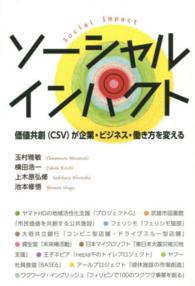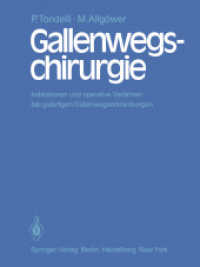- ホーム
- > 洋書
- > 英文書
- > Business / Economics
Full Description
Covering Institutionalist, Post-Keynesian, Marxist, and Feminist perspectives, Heterodox Economics of Military Spending provides a comprehensive analysis of the effect of military expenditures on the economy.
The impact of military spending on economic growth has always been a crucial issue for policymakers and academics. There exists an extensive body of literature on how military spending affects macroeconomic variables, including but not limited to economic growth, profit rates, income inequality, gender inequality, and employment. Different schools of economic thought have proposed various theoretical approaches to investigate the role of military production in a capitalist economy. While some of these approaches are competitive, others complement each other. Heterodox Economics of Military Spending is the first book to analyze the effects of military spending on various macroeconomic perspectives by considering all major alternative economic schools. This book also contributes to the literature by introducing new theoretical models and empirical evidence, with a special focus on its impact on economic growth.
This book will be of great interest to readers in defense and peace economics, the history of economic thought, Marxist economic theory, feminist economics, and pluralist approaches to economics.
Contents
1. Introduction: A Pluralistic Perspective on Military Spending 2. Invisible hand, visible arm: Neoclassical Perspective 3. No butter? Use guns: Military Keynesianism Appendix 4. The visible finger of the invisible hand on the trigger: The Military-Industrial Complex 5. Butter for bread, gun for oil: Marxist Perspective 6. The Effect of Military Spending on the Profit Rate: Empirical Works Appendix 7. The workers spread butter they get, and gun producers get what they spend: A Post-Keynesian Perspective Appendix 8. Girls make butter, boys play with guns: Feminist Political Economy Perspective 9. Militarization and Gender Inequality: Empirical Perspective Appendix 10. Conclusion Afterword by Özlem Onaran Index








